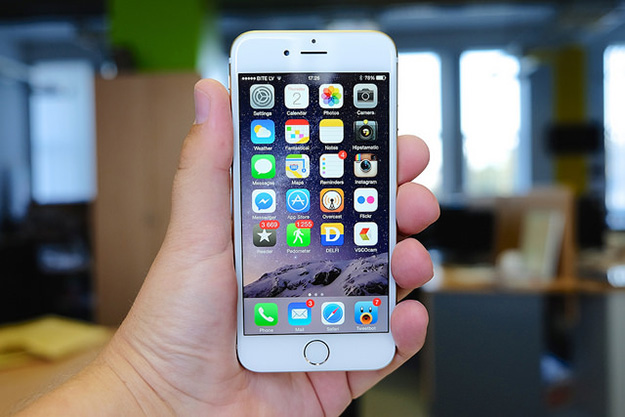iPhone 8 Will Allegedly Feature Curved OLED Display And USB-C Power Connector
The primary criticism surrounding the iPhone 7 is that Apple did not do enough to innovate—it feels more like an incremental update with faster hardware than a new generation handset. Apple disagrees with that notion, at least outwardly. Looking ahead, it's now rumored that Apple will use a flexible curved organic light-emitting diode (OLED) display on one of its iPhone 8 models.
People supposedly familiar with the matter told The Wall Street Journal that Apple's been putting in research on flexible OLED panels similar to the ones that Samsung uses in its flagship Galaxy phones, and that it had previously asked suppliers to build prototypes for evaluation. Apparently Apple was happy with they came up with, so it will go forward with plans to build and sell an iPhone model with a curved OLED panel sometime this year.

The iPhone 8 will look decidedly different from previous generation iPhone handsets. Image Source: Flicker (Kārlis Dambrāns)
The type of flexible display being discussed here is not one that end-users are able to manipulate. Instead, the technology allows for manufacturers to bend and mold the display how they see fit, such as giving it a curve on the edges the way Samsung does with its Galaxy S Edge handsets. Once the curve has been applied and the phone is manufactured, it becomes a sturdy panel that is no longer bendable
It is not clear if Apple is planning to wrap the iPhone 8's display around the edges or offer some other type of curve. However, just moving to an OLED panel will spark interest in Apple's next generation handset. It also allows Apple to build a different looking handset compared to the past few generation of iPhone models.
Beyond a new display, the same sources say Apple is planning other upgrades to differentiate the iPhone 8 from the iPhone 7. One of them will be a USB-C port for the power cord and other peripherals, rather than the original Lightening connector. Apple might also do away with the physical home button. If it does, it will be interesting to see where the company decides to place the fingerprint scanner (Touch ID sensor).
People supposedly familiar with the matter told The Wall Street Journal that Apple's been putting in research on flexible OLED panels similar to the ones that Samsung uses in its flagship Galaxy phones, and that it had previously asked suppliers to build prototypes for evaluation. Apparently Apple was happy with they came up with, so it will go forward with plans to build and sell an iPhone model with a curved OLED panel sometime this year.

The iPhone 8 will look decidedly different from previous generation iPhone handsets. Image Source: Flicker (Kārlis Dambrāns)
The type of flexible display being discussed here is not one that end-users are able to manipulate. Instead, the technology allows for manufacturers to bend and mold the display how they see fit, such as giving it a curve on the edges the way Samsung does with its Galaxy S Edge handsets. Once the curve has been applied and the phone is manufactured, it becomes a sturdy panel that is no longer bendable
It is not clear if Apple is planning to wrap the iPhone 8's display around the edges or offer some other type of curve. However, just moving to an OLED panel will spark interest in Apple's next generation handset. It also allows Apple to build a different looking handset compared to the past few generation of iPhone models.
Beyond a new display, the same sources say Apple is planning other upgrades to differentiate the iPhone 8 from the iPhone 7. One of them will be a USB-C port for the power cord and other peripherals, rather than the original Lightening connector. Apple might also do away with the physical home button. If it does, it will be interesting to see where the company decides to place the fingerprint scanner (Touch ID sensor).

